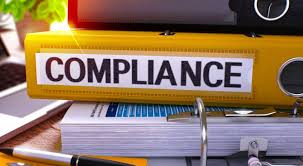DOJ Issues Revised Corporate Compliance Guidance: Consequence Management, Clawbacks and Human Resource Cooperation (Part I of III)

The Justice Department is rapidly pushing corporations to a new level of compliance. We are witnessing a watershed moment – DOJ is raising the bar on expectations surrounding corporate compliance programs. It would be a mistake, however, to interpret DOJ’s recent changes as limited to compliance compensation and preservation of internal communications data.
The New Push on Human Resource Cooperation
When considered together, the changes to the Corporate Enforcement Policy, the Evaluation of Corporate Compliance Programs, and the issuance of the Three-Year Pilot Program on Compensation Incentives and Clawbacks, reflect a broad set of expectations governing corporate compliance programs.
These changes start with bringing together senior leadership, business leaders, legal and compliance, and Human Resources with a joint objective – build together a set of incentives, disincentives and other structural changes to promote an ethical culture of compliance.
But there is more – DOJ expects companies to implement an effective employee reporting system, timely internal investigations, careful root cause analysis and a new term – consequence management. DOJ’s intent here is unmistakable. Companies have to monitor, detect and prevent future wrongdoing, and they have to hold bad actors and weak supervisors accountable for their failures.
In addition, DOJ’s recent changes reflect its fundamental frustration with the lack of cooperation by Human Resource professionals and their common failure to collaborate closely with compliance departments. . All too often we hear about Chief Compliance Officers’ frustration with their respective Human Resources colleagues and HR’s failure to cooperate, coordinate and share information. DOJ is tired of this as well.
Once considered in this context, the full ramifications of DOJ’s recent actions become very clear.

DOJ has cited its objective of promoting targeted efforts to ensure individuals are held accountable. At the same time, DOJ is seeking to reduce the burden of enforcement penalties on shareholders. DOJ has also reiterated its objective to prevent white collar crime primarily through promoting ethical corporate cultures.
DOJ Changes to Evaluation of Corporate Compliance Programs
DOJ recently issued a revised version of its Evaluation of Corporate Compliance Programs (“Evaluation Guidance”). The headline from the changes is significant – corporate compliance and human resources need to step up and work closely to share information and data, focus on internal investigations and root causes, review incentives and reasonableness of compensation programs, and develop new policies governing recoupment of clawbacks, incentive rewards and other mechanisms to promote ethical cultures. In sum, DOJ is attempting to create a new era of compliance cooperation and operationalization among senior leadership, business operations, human resources and legal and compliance departments.
To the extent that compliance and HR departments fail to coordinate and fight over turf, companies will face increased risks of a defective ethics and compliance program, employee misconduct and government investigation.
DOJ’s Evaluation Guidance replaces Section II.C, which was previously titled Incentives and Disciplinary Measures, with a new and more comprehensive Section, Compensation Structures and Consequence Management, which includes a number of new provisions:
- At the outset, DOJ replaces the term “disciplinary procedures” with a new term “consequence management,” which includes procedures to identify, investigate, discipline and remediate violations of law, regulations or policy.
- Companies should track data relating to disciplinary actions to measure effectiveness of the investigation and consequence management functions, which should include “monitoring the number of compliance-related allegations that are substantiated, the average (and outlier) times to complete a compliance investigation, and the effectiveness and consistency of disciplinary measures across the levels, geographies, units or departments of an organization.”
- Design and implementation of compensation schemes to foster a compliance culture, and whether a company has incentivized compliance by designing compensation systems that defer or escrow certain compensation tied to conduct consistent with company values and policies.
- Enforcement of company policies and contract provisions to permit the company to recoup prior compensation awards if the recipient has been found to have engaged in or to be otherwise responsible for corporate wrongdoing.
- Corporate policies to provide positive incentives, such as promotions, rewards, and bonuses for improving and developing a compliance program or demonstrating ethical leadership.
- Corporate career incentives for working on compliance that link opportunities for career advancement, assignment of managers and employees to serve as a compliance “champion”, or tying management bonuses to compliance performance metrics.

In evaluating a company’s compensation and consequences management program, DOJ outlined several new issues for examination, including: (1) the company’s transparency with the design and implementation of the disciplinary process; (2) consistent application of the disciplinary process for each instance of misconduct; (3) accurate measurement of disciplinary actions across all geographies, operating units, and levels of the organization; (4) evaluation of commercial targets and assessment of incentives to achieve these targets; (5) the role of compliance in design and award of financial incentives at senior levels of the organization; (6) company compliance incentives to encourage ethical behavior; and (7) the percentage of senior executive compensation that is tied to promoting ethical conduct.
Finally, DOJ’s Evaluation Guidance includes a new section focused on the effectiveness of the company’s consequence management system for compliance violations. In particular, the new provision focuses on the extent to which the company’s hotline reporting system reflects the company’s corporate culture, including the substantiation rates (across the company or between two or more different states, countries or departments, the conduct of root cause analysis relating to misconduct, the average time for completion of investigations into hotline reports, and the recoupment of financial bonuses from executives who committed or were responsible for misconduct.















Excellent article and can be used as awareness material and workshop sessions